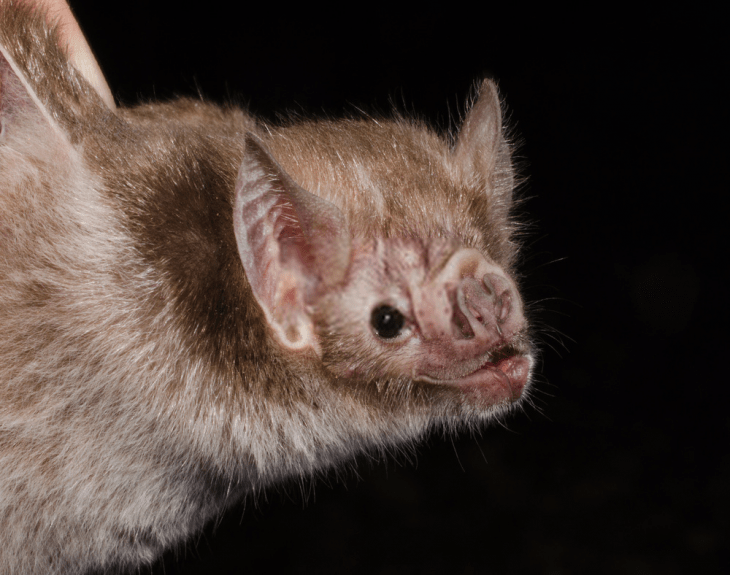
- Scientific Name: Desmodus rotundus
- Classification: Mammalia
- Family: Phyllostomidae
- Habitat: Tropics and subtropics
- Diet: Mammal blood
- Weight: 2 ounces
- Size: 3.5-inch body
- Speed: 9 miles per hour
- Lifespan: 9 years
- Conservation Status: Least concern
- Size: Vampire Bats Are Smaller than a Teacup
- Habitat: Vampire Bats Are Found Throughout the Americas
- Diet: Vampire Bats Really Do Drink Blood
- Behavior: Vampire Bats Live in Colonies
- Reproduction: Female Vampire Bats Are Pregnant for 7 Months
- Diet: Vampire Bats Do Not Suck Blood
- Behavior: Vampire Bats Sleep Upside Down
- Predators: Humans Are a Vampire Bat’s Worst Threat
- Anatomy: Vampire Bats Are the Only Mammal That Can Fly
- Behavior: Vampire Bats Are the Only Bats to Adopt Offspring
- Vampire Bats Are the Only Bats That Can Walk, Run and Hop
- Drugs Have Been Developed That Mimic Vampire Bat Saliva
- Vampire Bats Have Amazing Senses
- A Vampire Bat Can Ingest 40% of Its Weight During One Feeding Session
- Vampire Bats Are Incredibly Social
Vampire Bat Facts Infographics
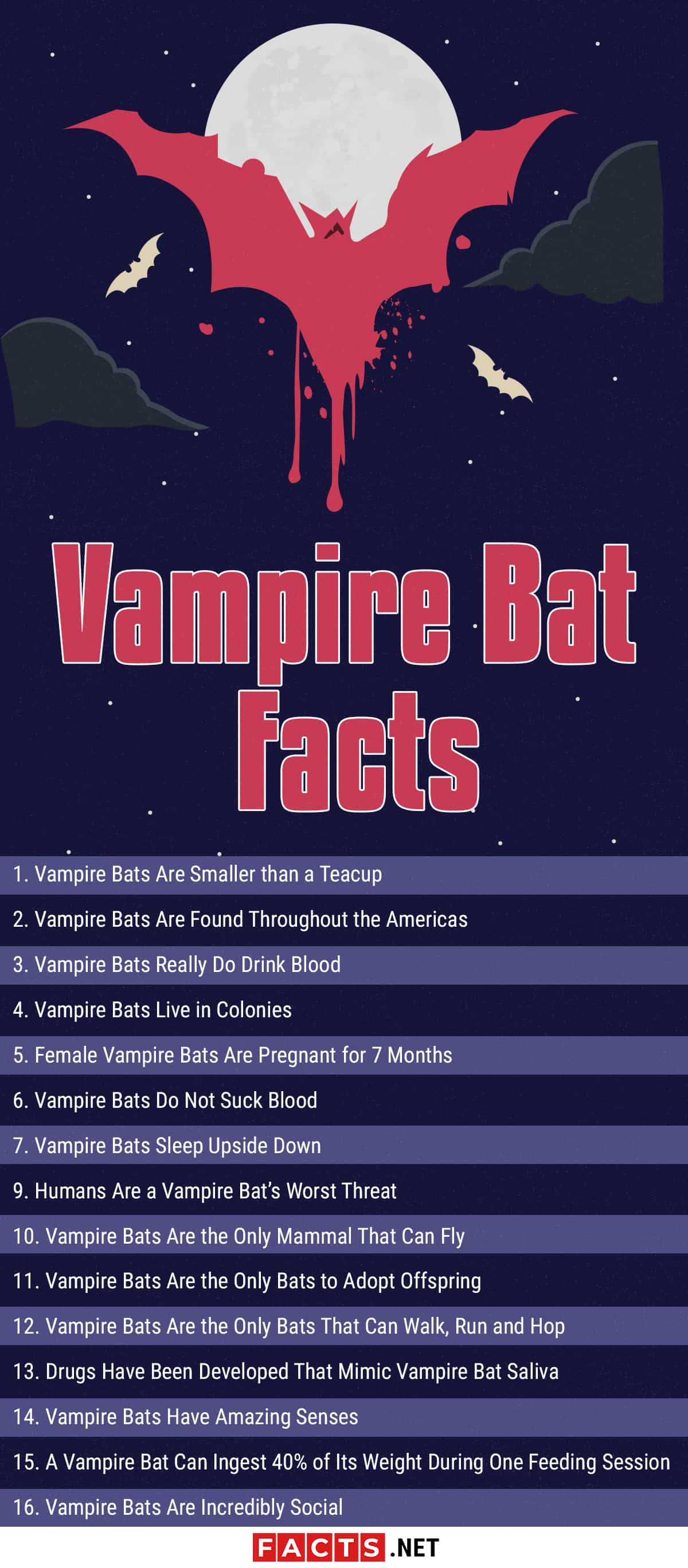
Vampire Bats Are Smaller than a Teacup
Vampire bat facts include their small stature. On average, a vampire bat’s head and body length is two to three inches. At the most, they weigh two ounces. Their wingspan stretches eight inches. Their physical appearance shows a gray and brown furry coat, large ears and thumb claws on the front of each wing.
Vampire Bats Are Found Throughout the Americas
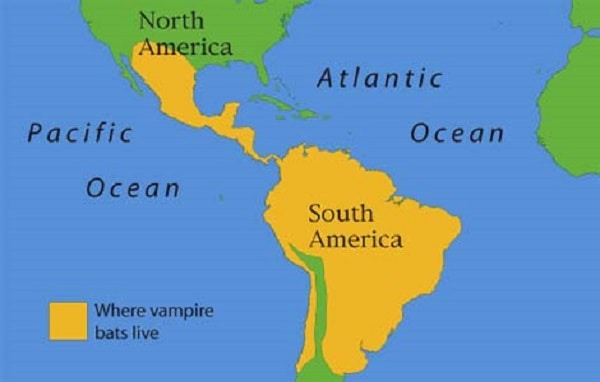
Vampire bats are found in caves, mines, hollow trees and abandoned buildings in tropical and subtropical areas. Countries where they can be found in abundance include Mexico, Brazil, Chile and Argentina. They can live at altitudes as high as 7,800 feet.
Vampire Bats Really Do Drink Blood
Vampire bat facts include the unique characteristic of a bat’s diet. Their sole food source is blood. This is a dietary trait known as hematophagy. There are only three bat species that feed on blood, including the vampire bat. In captivity, vampire bats are fed beef blood.
Vampire Bats Live in Colonies
Vampire bats live together in what is known as a colony. The size of the colony is usually around 100, but there have been reports of colonies containing as many as 1,000 bat members. While the bats live together, they hunt alone.
Female Vampire Bats Are Pregnant for 7 Months
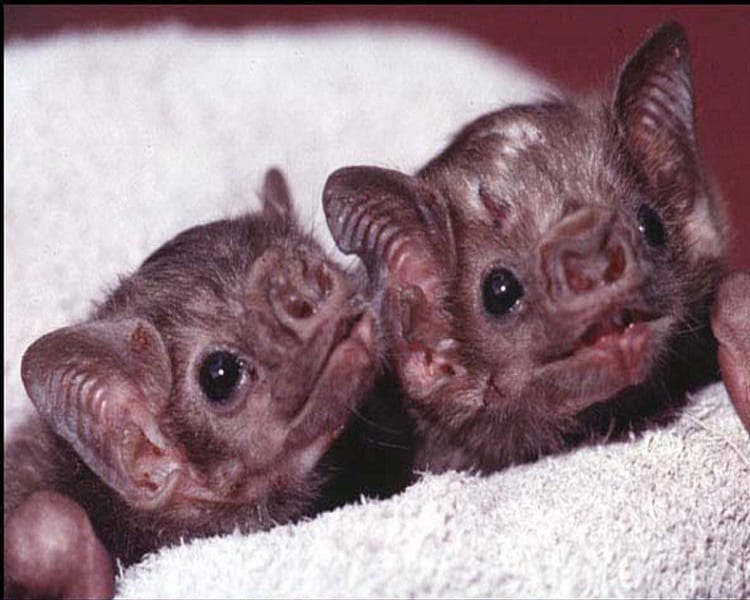
Vampire bat facts tell us about the statistics of the species life cycles. A male vampire bat will mate all year. Once a female is pregnant, she will give birth after seven months and will care for the offspring for five months. During this time, the baby bat consumes its mother’s milk until it’s old enough to consume a liquid diet of blood.
Vampire Bats Do Not Suck Blood
While the name vampire would suggest that these bats latch on to their prey and suck the blood out, they actually drink the blood as it exits the host. Vampire bats have sharp front teeth that they use to bite their prey with. They then lap up the escaping blood with their tongue. Their saliva contains chemicals that prevent the blood from clotting and also numb the skin around the bite so that their food source will not feel anything during the feeding.
Vampire Bats Sleep Upside Down

Vampire bats live in dark caves and tree hollows. They spend the daylight hours sleeping upside down. They do this not only for protection, but because this is the only way that a bat can take off in flight. Their wings are not able to lift them when they are an upright position. Bats only emerge during the darkest hours of the night.
Humans Are a Vampire Bat’s Worst Threat
While large birds do hunt vampire bats, their largest threat comes from humans. Farmers will often use poison to rid their property of vampire bats and protect their livestock. The poison is designed to carry throughout the entire colony as it is spread through grooming, a common behavior of vampire bats.
Vampire Bats Are the Only Mammal That Can Fly
Vampire bat facts show that they are classified as a mammal. They have teeth, hair and give birth to their offspring. They are, however, the only mammal that is able to fly. They do not have feathers like birds. Instead, their wings are simply skin that is stretched over their fingers, which is why you will find a thumb claw at the end of their wings.
Vampire Bats Are the Only Bats to Adopt Offspring
Mother vampire bats will only leave their young to hunt. If, for whatever reason, the mother does not return, other female vampire bats will care for the baby bat until it is old enough to be on its own. This care includes grooming and feeding. No other species of bats have been observed doing this.
Vampire Bats Are the Only Bats That Can Walk, Run and Hop
While other species of bats are able to catch their food source while they fly, vampire bats have the ability to hunt their prey from afar. They will land a few feet from their prey as they find the best spot to bite. Once they do bite the animal, they will hop back quickly to make sure that the animal doesn’t awake or attack them. Once they feel they are safe, they will walk back towards their prey and eat.
Drugs Have Been Developed That Mimic Vampire Bat Saliva

Scientists saw promise in the clot preventing chemicals in a vampire bat’s saliva that is used during feeding. Drugs with similar properties were invented to help prevent blood clots in patients with heart conditions and stroke symptoms.
Vampire Bats Have Amazing Senses
Vampire bat facts tell us that, despite popular beliefs, vampire bats can see and hear with amazing accuracy. They also have a specialized sensor near their nose that helps them find a food source. The sensor is extremely sensitive to heat and allows the bat to easily tell the difference between skin that is covered in thick hair and skin that is covering a blood vessel.
A Vampire Bat Can Ingest 40% of Its Weight During One Feeding Session
Vampire bats need to eat every two days, and a typical feeding session lasts for 20 minutes. A vampire bat is usually so bloated after eating that it needs to propel its body with extra force to fly back to its home. A colony of vampire bats can drink the blood of 25 cows within one year.
Vampire Bats Are Incredibly Social
Vampire bats share a strong family bond within their colonies. If a fellow member is unable to find a source of food for the evening, it may head back to the colony and beg other members for food. Vampire bats are able to regurgitate some of their own consumed blood and share with the hungry bat. Vampire bats also participate in what is known as social grooming. Females will groom their own and others’ offspring, and also each other.
Vampire Bat Facts – Facts about Vampire Bats Summary
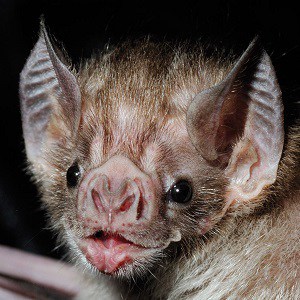 Vampire bat facts cover a wide range of topics. The bats hunt their prey at night and consume their blood as their main food source. Despite the connotations of their name, they are caring animals that will look after abandoned young bats and work together in their colonies. While they are not at risk of extinction, their most dangerous predators are humans, especially farmers. For such a small animal, vampire bats are surrounded by unique and interesting characteristics that make them a fascinating animal.
Vampire bat facts cover a wide range of topics. The bats hunt their prey at night and consume their blood as their main food source. Despite the connotations of their name, they are caring animals that will look after abandoned young bats and work together in their colonies. While they are not at risk of extinction, their most dangerous predators are humans, especially farmers. For such a small animal, vampire bats are surrounded by unique and interesting characteristics that make them a fascinating animal.
Was this page helpful?
Our commitment to delivering trustworthy and engaging content is at the heart of what we do. Each fact on our site is contributed by real users like you, bringing a wealth of diverse insights and information. To ensure the highest standards of accuracy and reliability, our dedicated editors meticulously review each submission. This process guarantees that the facts we share are not only fascinating but also credible. Trust in our commitment to quality and authenticity as you explore and learn with us.
